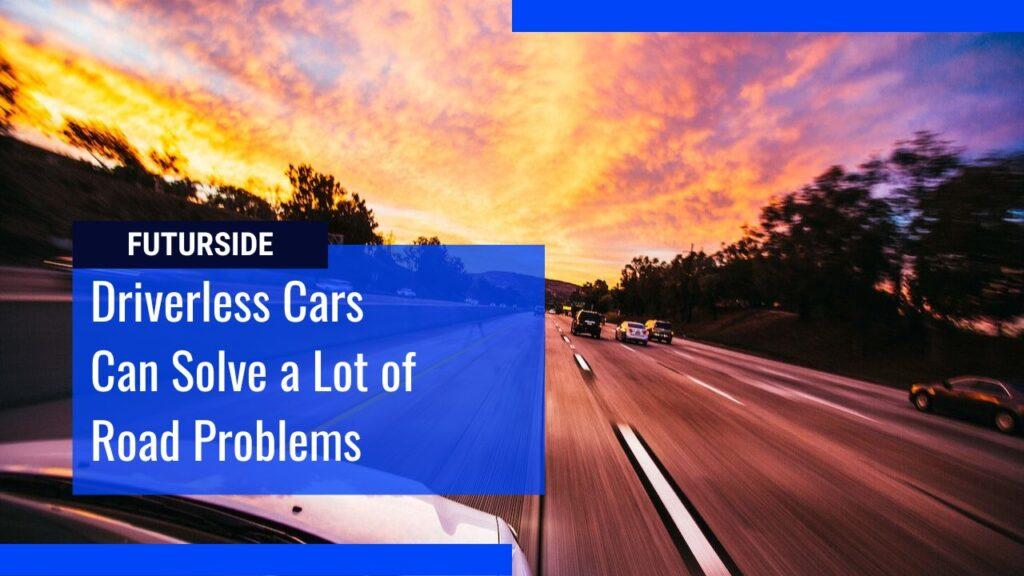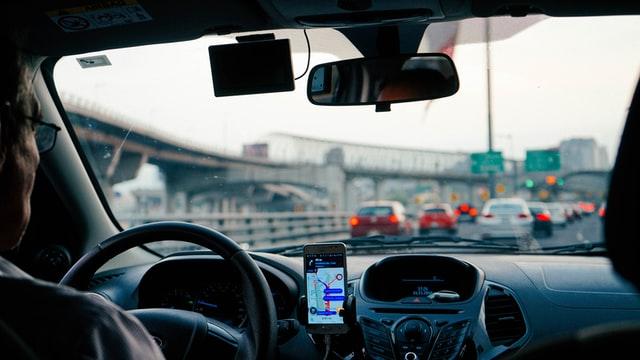Current experiments with autonomous vehicles indicate a bright future because human beings are sloppy and unreliable. We can get distracted, bored or tired. Imagine that you’re driving on the road when all of a sudden a car cuts you off, so you need to brake. And all the cars behind you need to do the same. Hence a line of cars comes to neutral.
And everybody has been through that, when the light goes green the first car accelerates, then the next, then the following one and then on your turn you catch the red. That’s because human reaction times limit how many cars can escape the off-ramp when the light changes. If all the cars accelerated simultaneously you would have made it through.
Coordination is the problem because we as drivers have slow reaction times and short attention spans. Take on the road where all cars are flowing smoothly until someone needs to cross the road. The driver who sees it from distances brakes a little to slow down, the driver behind him doesn’t notice immediately and brakes a little harder than necessary and the driver behind him does the same until someone comes to a complete stop. Hence, the traffic is now stopped.

Autonomous vehicles may alleviate traffic congestion. While they are decades away, their introduction will have a dramatic effect on urban mobility. They could make driving safer and more efficient and eliminate road trauma. They might even make our daily commutes and trips more productive.
A driver taps the brakes and a line of stopped cars forms. The stop-and-go reaction can travel kilometers backward. This dis-coordination limits how many vehicles can get through. If the drivers could coordinate to accelerate and brake simultaneously, easy driving would return. But they can’t, so traffic is eternal.
Congestion in cities costs American an average of $420 a week and nearly 42 hours each year. Currently, urban drivers in the United States waste 7 billion hours a year in traffic, use 3.1 billion gallons of fuel and lose $160 billion in fuel costs due to congestion. Hence with an autonomous transportation system, computers can coordinate congestion by changing their speeds.
In an ideal world, a self-driving car would be able to access digital maps and real-time traffic data to find the best route for the trip, reducing traffic and wastage. This technological innovation can provide many benefits. They could also save commuters time by detecting traffic jams and other road problems.
It could also allow commuters to work instead of wasting time concentrating on the road. In addition to saving time, autonomous vehicles could help save fuel by anticipating traffic conditions and reducing lane closures. Also, the technology would decrease the need for drivers to make frequent lane changes and avoid rubberneckers.
One example of a technology used is GPS navigation, which can reroute a vehicle due to congestion. But the technology behind self-driving cars can also communicate with other vehicles. sending signals to other vehicles around to coordinate speed to reduce risk and traffic.
As autonomous transports coordinate with other cars and with constant speed, more vehicles can be fit on the road. Moreover, they will be able to move faster and move closer to each other, which will reduce congestion and accidents. It is possible to imagine the potential traffic problems that autonomous technology could solve.
Self-driving cars will be electric and will travel at a constant speed. This will reduce the risk of constant braking and accelerating. This technology will make it easier for drivers to get around in cities with limited public transportation coverage.
Currently, the V2I (vehicle to infrastructure) technology allows autonomous vehicles to coordinate with other vehicles by using a system of roadside units. Roadside units can be anything from a sensor pack along the road to a street lamp or a bevy of sensors at an intersection.
In addition to the cameras and sensors, roadside units also have equipment for communicating with other vehicles. The units can coordinate traffic better when two units are in the vicinity. But this method isn’t the only way to make autonomous vehicles safe. A fully automated car could dramatically reduce the risk of human error.

The ultimate goal of this technology is to eliminate human error, which accounts for a large number of accidents on the road today. More than 90% of traffic accidents are the result of human error, such as distraction, impaired driving or poor decision-making. Statistics showed that distracted driving was responsible for 26% of all motor vehicle accident deaths.
Self-driving cars can also eliminate traffic accidents. A report found that autonomous vehicles can reduce traffic deaths by 90%. This could save thousands of lives and $190 billion in annual expenses. Hence, developing this technology is a huge step toward eliminating human error from the driving process.
Autonomous driving technology is designed with sensors that never lose vigilance. These sensors keep an eye on road conditions, pedestrians and the car in front of it. It also prevents human error due to drunk driving.
As technology advances, self-driving cars will be more reliable and capable of responding to road conditions. And coordinating with other vehicles can reduce the number of traffic accidents, and self-driving cars can provide safe transportation for everyone on the road.
Currently, no automaker is selling a fully autonomous system for sale. While fully automated driving may be a distant dream, for now, it isn’t that far off. In fact, some of the oldest car manufacturers are working with startups to develop the technology.

Still, there are a number of knotty problems to overcome in order to make driverless cars work safely on the road. If these problems can be solved, self-driving cars will redefine the way we travel. In the future, this technology will be a welcome addition to public transportation.
The benefits of autonomous vehicles will be felt when the technology is adopted widely. These cars are the future of the automotive industry. There are already many players working on this technology. Companies such as Google’s Waymo are currently testing their autonomous rideshare vehicles on the road.
Driverless cars will change the way people travel around the world. While they will probably have positive benefits for society, they may also have unintended consequences, including the loss of millions of driving jobs and the collapse of the traditional auto industry. But for now, the development of driverless cars is picking up momentum, so you should be prepared for unexpected consequences.
Hence a computer can optimize a complex trip and adapt to traffic and road conditions, all while being fuel-efficient. Most importantly, computers can communicate with other computers. By contrast, a self-driving car, in tandem with other cars in its vicinity, can collectively manage traffic flow and reduce accidents in a coordinated manner.

0 Comments